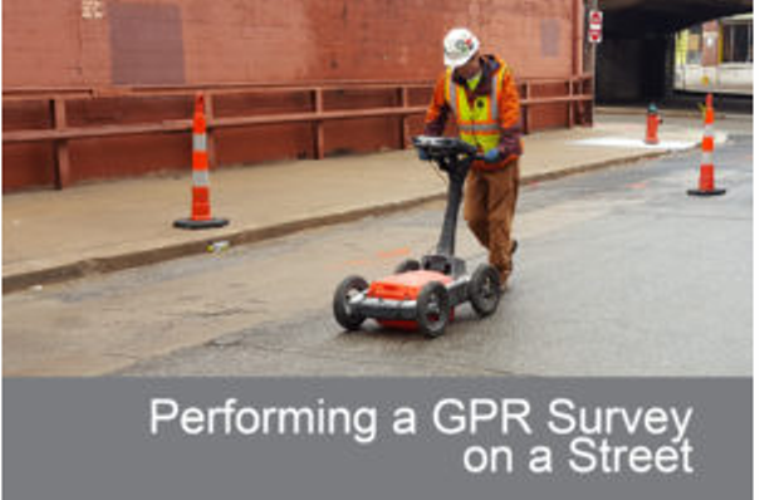Under the Surface Layer: Investigating Ground Penetrating Radar Applications in Geophysical Studies

GPR, also called GPR, has emerged as a crucial tool in the field of geophysics, granting a window into what lies beneath the Earth's surface. As the demand for precise and efficient surveying techniques expands, GPR surveys have gathered significant momentum across various industries. But what precisely is a GPR survey, and why is it essential? This technology facilitates non-invasive exploration of sub-surface structures, uncovering everything from utilities and archaeological artifacts to geological formations and possible hazards.
The importance of GPR surveys is immense. They offer many benefits in underground detection, aiding in construction and engineering projects by providing critical information before ground disturbance. Grasping right here behind GPR is crucial for anyone looking to employ it effectively. In this article, we will examine the practical applications, advantages, and considerations of GPR surveys, providing you with the knowledge needed to maneuver through this innovative field and make thoughtful decisions for your projects.
Understanding Ground Penetrating Radar Tech and Its Importance
Ground Penetrating Radar, often referred to as GPR, represents a non-invasive technique which employs EM radiation to map below-surface features. The technology works by transmitting radar pulses into the ground and recording the reflected signals from different subsurface materials. The duration it takes for the reflections to come back is used to establish the depth and composition of the materials beneath, allowing for a detailed examination of what lies beneath the ground without the need for excavation.
The significance of GPR technology is profound, particularly in fields such as building, civil engineering, and historical studies. By offering real-time data regarding subsurface conditions, GPR boosts the decision-making process and reduces the hazards associated with unforeseen underground obstacles. Its capability to detect infrastructure, voids, and other critical features aids significantly in planning and carrying out building endeavors while ensuring safety and compliance to legal requirements.
Additionally, GPR technology offers a budget-friendly solution in comparison with conventional survey techniques. It lessens the likelihood for harm to existing structures and lowers the need for expensive and labor-intensive digging projects. As industries continue to embrace advanced technologies, the dependence on GPR surveys is expected to grow, making it an essential tool for experts seeking to improve their initiatives and assets successfully.
Primary Uses and Advantages of GPR Surveys
Ground Penetrating Radar technology investigations are crucial in multiple fields, notably for their capacity to identify and outline underground infrastructure, utilities, and geological features. This method is extensively used in building and engineering projects, where comprehending subsurface situations is essential for effective execution. By offering live data, GPR investigations help engineers avoid possible hazards, such as striking underground services during construction, thereby enhancing protection and productivity on job sites.
In furthermore to construction, GPR investigations serve a significant function in environmental and earth science studies. They permit professionals to evaluate soil environments, detect buried pollutants, and assess site appropriateness for project activities. This ability is vital in making educated decisions about land management and environmental cleanup while also ensuring compliance with regulatory requirements. The non-invasive nature of GPR allows that initiatives can continue with little disruption to the surface and the surroundings.

A further key use of GPR is its use in historical studies, where it assists uncover hidden relics and elements without excavation. This non-invasive technique not only maintains the condition of historical sites but also gives researchers with valuable data into past human activities. The versatility of GPR investigations renders them an essential tool across various disciplines, leading to quicker results, cost-effective answers, and better-informed decision-policies throughout the project lifecycle.
Factors and Future Developments in GPR Surveys
As GPR technology continues to advance, several considerations emerge for experts looking to incorporate this method into their initiatives. GPR Survey Droitwich Spa is the need for trained operators who understand both the technology and the geoscientific environment in which it is used. Educational programs and qualifications are becoming increasingly important to ensure that operators can interpret information accurately and make educated decisions based on GPR results. Additionally, staying informed with visite site in GPR technology is essential for maximizing the effectiveness of surveys.
Upcoming trends in GPR surveys are leaning towards enhanced data processing and analysis techniques. Developments such as AI intelligence and machine learning are being explored to improve the interpretation of GPR data, allowing for faster and more accurate insights. Additionally, the combination of GPR with other geophysical methods, including EM surveys and ground-based lidar, may provide a more holistic understanding of subsurface conditions. This combined approach could significantly improve the accuracy of underground assessments.
In conclusion, the growing demand for sustainable construction practices is likely to fuel the integration of GPR surveys. As industries aim to minimize ecological impact, GPR offers a non-destructive means of surveying that can help in strategizing and carrying out initiatives with a reduced carbon footprint. In the future, we can expect GPR methods to become more available and versatile, solidifying its role as a crucial tool in geophysics, construction, and environmental assessments.
